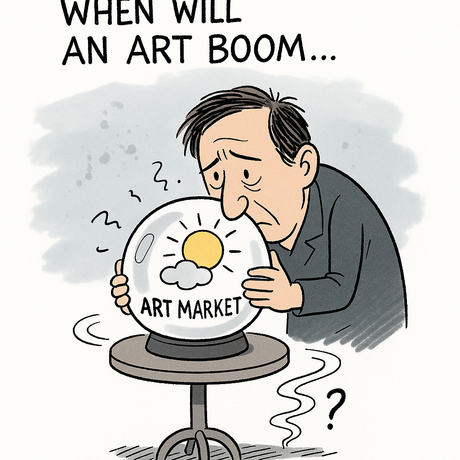In a touching documentary by filmmaker Fabienne Rio, the artistic journey of Nantes-based sculptor Michel Bassompierre unfolds from the French countryside to the streets of New York. This sensitive portrait captures the world of an artist whose universe intersects with beauty, light, and features insights from renowned actor François Cluzet, creating a work of remarkable delicacy.
The documentary opens with striking visuals of New York, showing a bronze gorilla being carefully transported, while capturing the profound gaze of Michel Bassompierre himself. However, the first sounds viewers hear come from nature itself – specifically, the forest. "Before being a sculptor, it was animals and the forest that attracted me. I spent nights in the forest, either alone or with my brother," Bassompierre explains. These natural roots would define his artistic foundation from an early age.
Even as a child, Bassompierre's artistic inclinations were unmistakable. "I drew so much that my mother would give me old rolls of wallpaper. There was no need to watch me. You just had to follow the pencil marks, and they'd find me at the end," the artist recalls. This early passion would eventually guide him toward becoming what he now calls himself: "the last bear of the Goulaine marshes."
However, Bassompierre's artistic path was far from smooth. As a graduate of the Fine Arts school, he developed away from traditional artistic circuits. Remaining faithful to figurative art, he sometimes faced condescension from the official art world, being dismissed as "outdated" or "provincial." Despite these challenges, Bassompierre continued his relentless quest: not to give animals a soul, but to capture their spirit. Anyone who looks at his works can immediately grasp this distinction.
While Mother Nature remained his muse, it was a bird of ill omen that nearly destroyed everything. Betrayed and swindled by an art dealer, Bassompierre lost 40 of his works and found himself financially ruined. He was on the verge of abandoning everything when his family stepped in to rescue both the artist and his career.
Guillaume and Karène, his children, entered the scene at this crucial moment. His son ended his own career in music to become the "conductor" of this new adventure. "We're a family where we don't necessarily say we love each other, but we prove it," Guillaume explains. His daughter took charge of communications. Their mission was clear: to ensure their father's talent was recognized during his lifetime.
"The ultimate goal is for him to be known while he's still here, because he was convinced that maybe he'd be recognized 20 years after his death... I want to prove to him, and I think this is my real role as a son, to prove to my father that he's wrong," Guillaume states with determination.
Bassompierre's sculptures, whether bears or gorillas, impress viewers with their size and the emotions they convey. This reveals the complete duality at the heart of his work: serenity within power, tenderness sculpted into the wild. For Michel Bassompierre, creating is a "vital necessity, an act of sublimation, a way to push back death to celebrate life." Each work represents a trace left to the world, a fragment of himself that will endure.
One might imagine this to be artistic presumption, but it's quite the opposite. Michel Bassompierre belongs to the class of the humble and shy, those who truly touch people's hearts. "Where I'm most uncomfortable is when people tell me, 'What you do is beautiful,'" the modest artist admits.
Yet visitors continue to express this sentiment and demonstrate it at exhibitions where filmmaker Fabienne Rio subtly captures the gazes of men and women who come to admire both the works and the artist. Among them is actor François Cluzet, who offers his perspective on Bassompierre's creations.
"There's something I feel that's more like empathy that the animal would have for us. As if it were compassionate. What I feel here is that if I were very happy, I would want to celebrate with these animals," Cluzet reflects, his words resonating with the emotional depth of the sculptures.
These words still echo as Michel Bassompierre's sculptures find their place in New York during a monumental exhibition. His goal was to counter the American collective imagination, dominated by the terrifying figure of King Kong, the cinema monster itself inspired by an aggressive sculpture by another French artist, Emmanuel Frémiet. Bassompierre takes the opposite approach, presenting a "majestic and peaceful gorilla, a totem of peace, erected in the midst of urban excitement."
"I don't want to make a gorilla that scares people. A scarecrow gorilla would be unfair to this family of animals," Bassompierre explains, emphasizing his commitment to portraying these creatures with dignity and respect.
Behind this artistic trajectory lies the story of Marcelle, Michel Bassompierre's mother. In the 1930s, she enrolled in the Arts Déco school, which was "extremely innovative for the time." Unfortunately, that era was not yet ready for women's artistic fulfillment. Her husband, whom she met after the war, asked her to give up her career to stay home and raise their children. A "wasted talent," a "prevented artist," Marcelle put her art aside. A tangible trace of this legacy survives: a wood engraving bearing the inscription "For Michel, from his mother, with hope to encourage him."
Michel Bassompierre has done much more than that, creating luminous works that leave no one unmoved. His journey from the marshes of Goulaine to the galleries of New York represents not just personal triumph, but a testament to the power of family support and unwavering artistic vision. Through Fabienne Rio's documentary, viewers witness the transformation of a humble artist into an internationally recognized sculptor whose animal spirits continue to touch hearts across continents.































